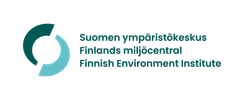Baltic Sea monitoring cruises: Phosphorus content of water near the sea bottom increased in Bothnian Bay
The marine research vessel Aranda and a coastal monitoring vessel have returned from their annual late summer monitoring cruises. Phosphate phosphorus content near the sea bottom in the open sea area of the Bothnian Bay has continued to increase. The oxygen situation in Finnish sea areas corresponded to a fresh evaluation of the situation by the Baltic Marine Environment Protection Commission (HELCOM): in the depths of the open water areas of the Gulf of Finland it is weak, and no benthic fauna was found in the bottom. The oxygen situation is good to excellent In the Gulf of Bothnia, and benthic fauna communities are thriving. HELCOM evaluated the eutrophication level in open sea areas around Finland as generally fair, and in coastal areas as satisfactory.
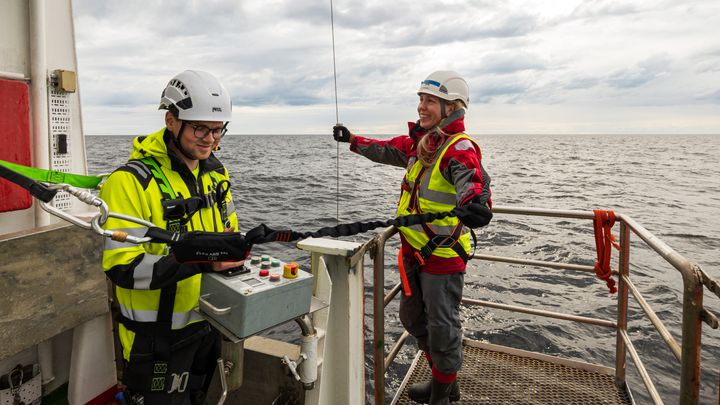
Aranda's late summer cruise focused on the Gulf of Finland, the Archipelago Sea, the northern part of Baltic Proper, the Sea of Åland, the Bothnian Sea, Kvarken, and the Bothnian Bay. The coastal cruise, meanwhile, focused on the coastal areas of the eastern Gulf of Finland and the Archipelago Sea. In addition to examining the nutrient and oxygen situation, participants in the cruise also collected information on the variables depicting the effects of climate change on the sea environment as well as changes in the benthic fauna and plankton communities. Observations on the nutrient situation at the end of summer are important for the updating of indicators for the evaluation of eutrophication by the Baltic Marine Environment Protection Commission (HELCOM).
Oxygen and nutrient situation of water near the bottom as well as benthic fauna communities in the summer of 2023
Gulf of Finland
The oxygen situation in the deeper parts of the Gulf of Finland remains poor, which enables the release of phosphorus reserves from bottom sediments, thereby increasing the amount of phosphate phosphorus in water near the bottom. Based on observations in June, benthic fauna appeared only in a few of the monitoring stations in the open sea. At depths of more than 60 metres the bottom was mostly dead. However, in the inner archipelago of the eastern part of the Gulf of Finland communities of benthic fauna typical of eutrophic inner bays were found. The oxygen level had declined in areas of the outer archipelago exposed to the influence of open sea deep water. Only species that tolerate conditions of low oxygen were found at the bottom there.
Gulf of Bothnia
The content of phosphate phosphorus in areas near the bottom in the open sea of the Bothnian Bay has continued to increase, as it has done in recent years. The oxygen situation in the area is nevertheless excellent throughout the column of water, so the higher content is not the result of internal loading. In the future there is good reason to investigate if this is a sign of a weakened ability of the sea bottoms in the area to bind phosphorus or whether it is phosphorus flowing from the main basin of the Baltic Sea through the Bothnian Sea. The oxygen situation near the bottom of the Bothnian Sea remains good, although it has declined over a longer period. Benthic fauna communities in the area are plentiful and in good condition.
Archipelago Sea
Monitoring in the Archipelago Sea focused on central parts of the sea area this summer. Observations were made especially in areas leading from Airisto and Paimionlahti to the outer archipelago. The oxygen content at the bottom was good or satisfactory in internal areas of the Archipelago Sea. However, at some observation stations the oxygen level was exceptionally low compared with previous years, although no areas were completely depleted of oxygen. Benthic fauna communities in the Archipelago Sea are mostly diverse and numerous. Nevertheless, in the southern open sea areas of the Archipelago Sea, in the northern Baltic Proper, the deep water below the permanent halocline of the main basin is oxygen-free and no benthic fauna are to be found.
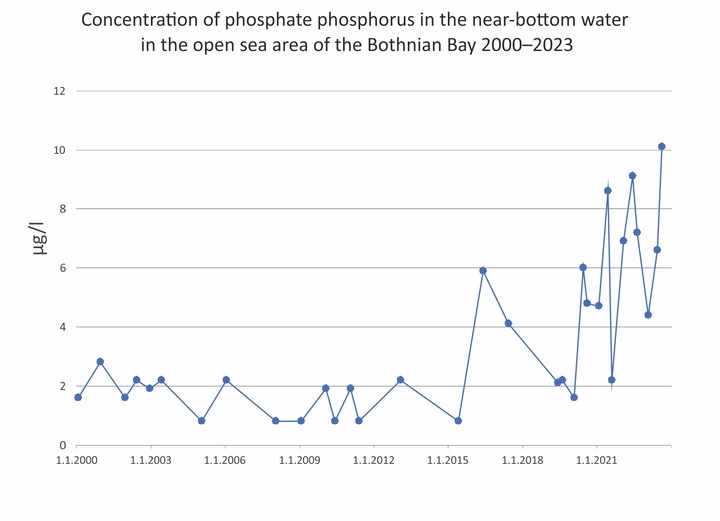
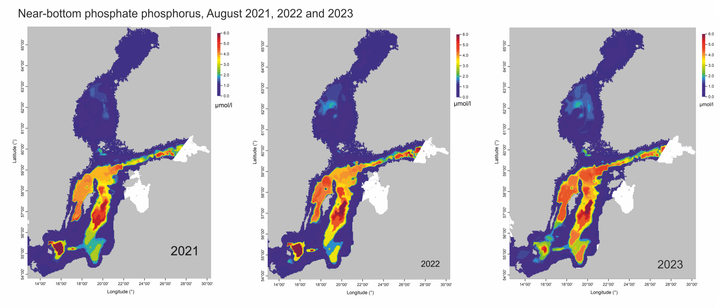
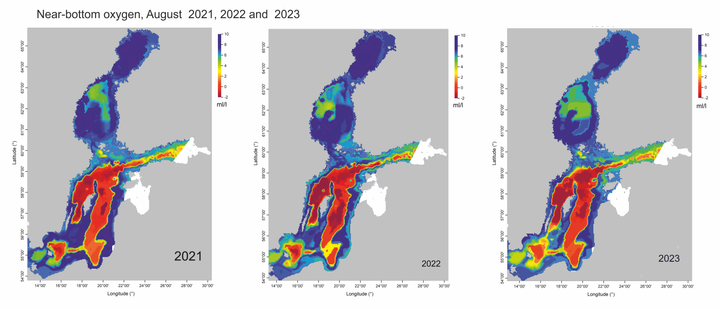

Fresh HELCOM evaluation: The eutrophication situation of sea areas around Finland is mostly satisfactory or fair
The goal of Finnish marine management measures is for the entire sea area to be in good condition. A good status for the Baltic marine environment is also the goal of the work of the Baltic Marine Environment Protection Commission (HELCOM), in which Finland is an active participant. HELCOM updates its evaluation of the state of the Baltic Sea every six years. The most recent evaluation of the state of eutrophication was published in June 2023. It found that with respect to eutrophication, the state of the open sea areas surrounding Finland is fair, and that of coastal areas is mostly satisfactory.
The HELCOM eutrophication evaluation is based on several indicators of the state of the sea. Observations from the monitoring cruises conducted by the Finnish Environment Institute on matters such as the nutrient and oxygen levels, as well as benthic fauna and plankton communities, are used in updating the indicators of the development of diversity.
HELCOM described the state of benthic fauna communities in the open sea area of the main basin of the Baltic Sea located south of the Gulf of Finland and the Archipelago Sea, and the state of near-bottom water as fair. The oxygen debt, which describes the state of the depths of the Gulf of Finland and Baltic Proper, has grown in the past two decades. The oxygen situation of water near the bottom has also declined in shallower areas of open sea in the eastern Gulf of Finland. Because of the poor oxygen situation, the benthic fauna in the Gulf of Finland is also doing poorly. The oxygen situation has been affected especially by the flow of salty water with low oxygen and high nutrient levels from the main basin of the Baltic Sea into the Gulf of Finland.
However, the oxygen situation in the open sea area of the Bothnian Bay is excellent, and in the Bothnian Sea and Kvarken it is good. Benthic fauna communities in the area are doing well. The water at the bottom the open sea area of the Bothnian Bay, the Bothnian Sea, and Kvarken is not lacking in oxygen because thresholds in the Åland Sea block the salty bottom water from Baltic Proper, which enables permanent stratification, from flowing into the sea area. However, the situation in the Gulf of Bothnia has slowly deteriorated in the past decade. The nutrient load coming from the catchment area of the sea area has not increased, but it gets phosphorus from the main basin of the Baltic. Despite the good condition at the bottom, the eutrophication situation of the sea area has been seen as fair, owing to the higher phosphorus and algae content.
The load of nutrients containing nitrogen and phosphorus originating on land and flowing into the sea is reported to have declined significantly in the entire Baltic Sea area. However, the reduction in the load will be reflected as an improvement of the state of the sea only after a long delay, because of nutrient reserves that have amassed in the sea over the decades, slowing the improvement. Nutrients, especially phosphorus that is stored at the sea bottom, are released in oxygen-free conditions as a so-called internal load.
Movements of water masses in Baltic Proper have a considerable effect especially on the situation of the coastal waters of the Gulf of Finland and the outer Archipelago Sea. In the long term, reducing nutrient runoff from land and bringing climate change under control are key factors in establishing a good state for the Baltic Sea. Our own actions affect our nearby coastal waters also in the shorter term.
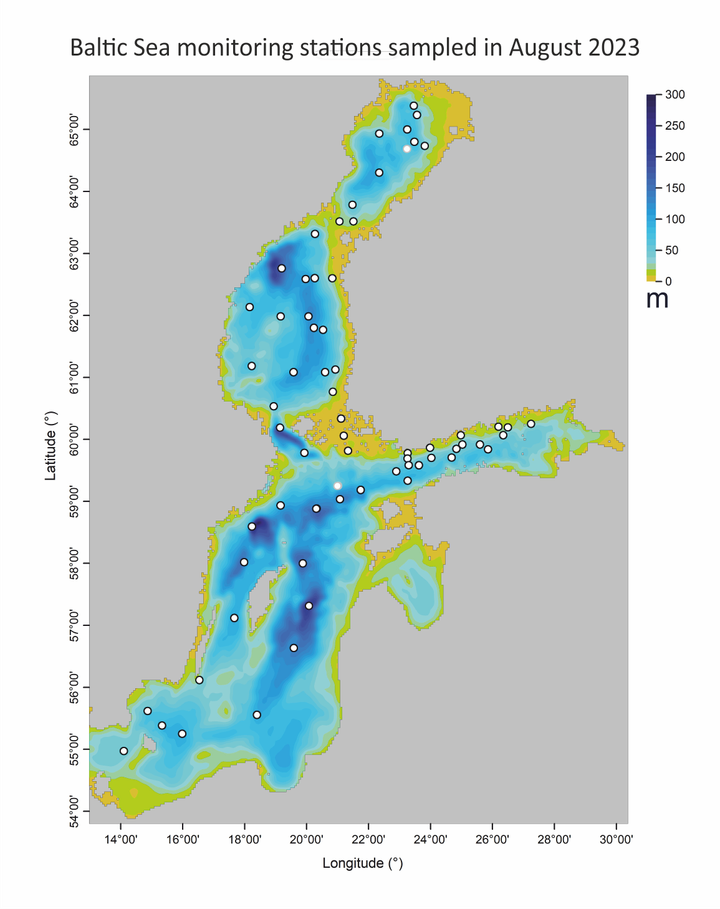
Keywords
Contacts
Leader of the Aranda expedition, Senior Researcher Pekka Kotilainen, tel. +358 295 251 317, firstname.lastname@syke.fi
Benthic fauna, coastal monitoring: Senior Research Scientist Henrik Nygård, tel. +358 295 251 469, firstname.lastname@syke.fi
Communication Specialist Eija Järvinen, tel: +358 295 251 242, firstname.lastname@syke.fi
Media service at Finnish Environment Institute
Our Media Service provides information on research, helps journalists find experts for interviews and provides photos for media use.
Our Communication experts will answer your inquiries on weekdays from 9 am to 4 pm.
Images
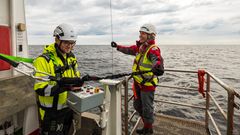
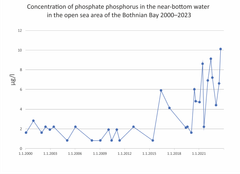
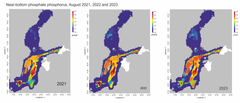
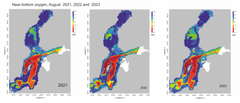
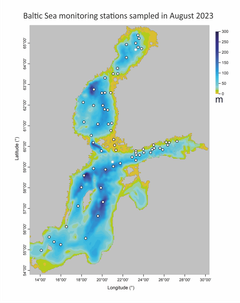
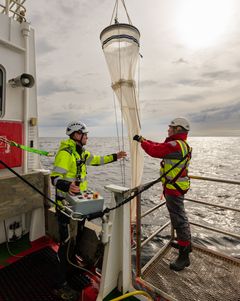
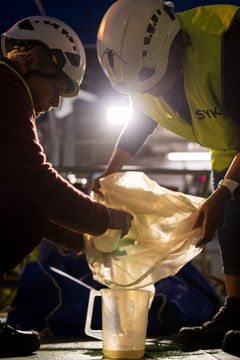

Links
It is time to move beyond solving environmental problems one by one, to systemic sustainability transformations. The Finnish Environment Institute (Syke) contributes to building a sustainable society through research, information and services. The Finnish Environment Institute is a research institute with 700 experts and researchers located in Helsinki, Oulu, Jyväskylä and Joensuu.
Subscribe to releases from Suomen ympäristökeskus
Subscribe to all the latest releases from Suomen ympäristökeskus by registering your e-mail address below. You can unsubscribe at any time.
Latest releases from Suomen ympäristökeskus
Finnish Ecosystem Observatory makes nature data accessible to all22.4.2024 15:13:39 EEST | Press release
The significance of nature data in society has grown significantly in recent years, as decision-making often requires more accurate, up-to-date, and diverse information about nature. The Finnish Ecosystem Observatory project has responded to society's information needs by, for example, building the Finnish Nature Information Hub website. In addition, a group bringing together different organisations has been established to coordinate nature information.
Viikkokatsaus 22.–26.4.202422.4.2024 14:11:46 EEST | Tiedote
Hei! Tässä tiedoksesi meillä Suomen ympäristökeskuksessa tällä viikolla ilmestyviä tiedotteita, uutisia, kampanjoita, blogeja ja uutiskirjeitä. Mukana myös tulevia tapahtumia ja webinaareja. Jakelemme viikkokatsauksen maanantaisin STT:n kautta. Koosteet löytyvät myös STT-uutishuoneesta, josta voit tilata kaikki Suomen ympäristökeskuksen tiedotteet.
Finlands ekosystemobservatorium gör naturinformationen tillgänglig för alla22.4.2024 12:50:17 EEST | Tiedote
Behovet av naturinformation i samhället har de senaste åren ökat kraftigt, eftersom beslutsfattande ofta kräver allt mer exakt, aktuell och mångsidig information om naturen. Inom ramen för det finska ekosystemobservatorieprojektet har samhällets informationsbehov bland annat mötts genom att bygga en gemensam och omfattande plattform, Luontotieto.fi. Dessutom har projektet lett till att en samordningsgrupp för naturinformation har bildats, vilket tidigare inte funnits i Finland.
Luonto koetaan tärkeäksi arkimaisemissa22.4.2024 09:54:55 EEST | Tiedote
Maisemat vaikuttavat ihmisten hyvinvointiin, arvioivat lähes kaikki valtakunnalliseen maisemakyselyyn vastanneista. Tyytyväisyyttä omiin arkimaisemiin tuovat erityisesti vesien ja metsien läheisyys. Useimpien mielestä maisemat tulisi ottaa päätöksenteossa nykyistä paremmin huomioon niin kaupungeissa kuin maaseudullakin.
Naturen upplevs viktig i vardagslandskap22.4.2024 09:54:39 EEST | Tiedote
Landskap påverkar människors välbefinnande, enligt nästan alla som svarade på en riksomfattande landskapsundersökning. Särskilt nöjda är de med närheten till vatten och skogar i sina vardagslandskap. De flesta anser att landskapen bör beaktas bättre i beslutsfattandet både i städerna och på landsbygden.
In our pressroom you can read all our latest releases, find our press contacts, images, documents and other relevant information about us.
Visit our pressroom